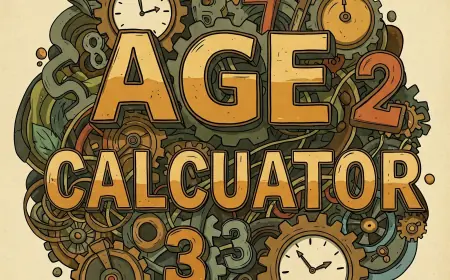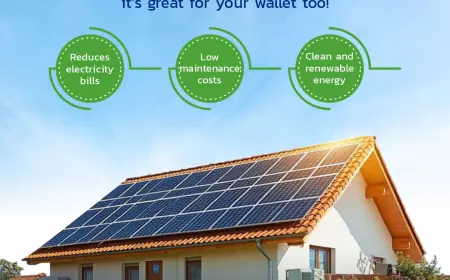Agricultural Sprayers Market Overview: Growth Drivers, Challenges, and Future Opportunities
The agricultural sprayers market is a crucial component of modern farming, providing essential tools for the precise application of pesticides, herbicides, and fertilizers.
The agricultural sprayers market is a crucial component of modern farming, providing essential tools for the precise application of pesticides, herbicides, and fertilizers. As global agriculture evolves to meet the demands of a growing population, the importance of sprayers in enhancing crop yield and quality continues to rise. This report offers an in-depth analysis of the agricultural sprayers market, exploring key growth drivers, challenges, and opportunities. It also provides a comprehensive regional analysis, market segmentation, and a look at the competitive landscape, offering insights into future trends and potential developments.
Market Dynamics
Key Growth Drivers
- Increasing Agricultural Productivity: The rising need for higher crop yields to support the global population drives the adoption of advanced agricultural sprayers. These tools enhance the efficiency and precision of input applications, resulting in improved crop performance.
- Technological Advancements: Innovations in sprayer technology, including GPS-guided systems, automated controls, and drone-assisted spraying, are improving the precision and effectiveness of agricultural inputs, reducing waste and increasing efficiency.
- Government Support: Favorable government policies and subsidies aimed at promoting modern agricultural practices are boosting the sprayers market. Governments are investing in technology to enhance agricultural productivity and sustainability.
Sample Pages of Report: https://www.infiniumglobalresearch.com/reports/sample-request/958
Market Challenges
- High Costs: The significant initial investment required for advanced sprayers can be a barrier for small and medium-sized farmers. Additionally, maintenance and repair costs add to the overall expense.
- Environmental Concerns: The use of chemical sprayers raises environmental and health concerns, including pesticide runoff and exposure to harmful substances. Increasing regulatory pressures and public awareness are driving demand for more sustainable alternatives.
- Skill Requirements: Operating advanced sprayers often requires specialized knowledge and training, which can be a challenge in regions with limited access to technical education and resources.
Emerging Opportunities
- Growth in Emerging Markets: The expansion of agriculture in developing regions such as Asia-Pacific and Africa presents significant opportunities for the agricultural sprayers market. As these regions modernize, the demand for efficient sprayers is expected to rise.
- Sustainable Solutions: The increasing focus on sustainable and eco-friendly agricultural practices is creating opportunities for the development and adoption of sprayers that minimize environmental impact, such as low-emission and precision application technologies.
Regional Analysis
- North America: The North American market is well-established, with high adoption rates of advanced sprayer technologies. The presence of major agricultural machinery manufacturers and a focus on precision farming are key drivers of market growth.
- Europe: Europe is characterized by a strong emphasis on sustainable agriculture and strict environmental regulations, driving demand for sprayers that reduce chemical use and improve efficiency.
- Asia-Pacific: With a rapidly growing agricultural sector, the Asia-Pacific region is a key growth area for sprayers. Countries like China and India are investing in modern agricultural technologies to boost productivity and meet food security goals.
- Latin America: The agricultural sector in Latin America, particularly in Brazil and Argentina, is expanding. The adoption of advanced sprayers is increasing as farmers seek to enhance crop yields and efficiency.
- Middle East & Africa: The market in the Middle East and Africa is developing, with growth driven by increasing agricultural investments and modernization efforts, though challenges related to infrastructure and access to technology remain.
Market Segmentation
The agricultural sprayers market can be segmented by:
- Type:
- Handheld Sprayers
- Knapsack Sprayers
- Self-propelled Sprayers
- Tractor-mounted Sprayers
- Aerial Sprayers (Drones)
- Application:
- Cereals & Grains
- Fruits & Vegetables
- Oilseeds & Pulses
- Others
- Capacity:
- Small-sized Sprayers (1-20 liters)
- Medium-sized Sprayers (20-200 liters)
- Large-sized Sprayers (Above 200 liters)
- Region:
- North America
- Europe
- Asia-Pacific
- Latin America
- Middle East & Africa
Report Overview: https://www.infiniumglobalresearch.com/reports/global-agricultural-sprayers-market
Competitive Landscape
- Market Dominance of Large Players: Large companies dominate the agricultural sprayers market, holding a significant share due to their extensive product offerings, strong market presence, and established distribution channels. Companies like John Deere, CNH Industrial, and AGCO Corporation lead the market with their comprehensive range of sprayer technologies.
- Price Control by Major Players: Large players often exert substantial influence over pricing due to their economies of scale. They can set prices based on their production capabilities and market strategy, though competition and innovative products from smaller companies can create price variations.
- Challenges from Small and Mid-sized Companies: Smaller companies often challenge large players domestically by offering specialized or innovative products tailored to specific needs. These companies may focus on niche markets or provide cost-effective solutions that appeal to smaller-scale farmers.
Future Outlook
- Importance of New Product Development: New product development is essential for companies to remain competitive in the agricultural sprayers market. Innovations such as smart sprayers with precision technology and enhanced efficiency features help companies differentiate their offerings and meet the evolving needs of farmers.
- Growing Demand for Sustainable Products: Sustainable products are gaining traction among environmentally conscious customers. Products that reduce chemical use, conserve resources, and minimize environmental impact are likely to earn strong customer support and loyalty as sustainability becomes a key factor in purchasing decisions.
Conclusion
The agricultural sprayers market is poised for growth, driven by the need for enhanced agricultural productivity and technological advancements. Despite challenges such as high costs and environmental concerns, opportunities in emerging markets and the shift toward sustainable practices present promising prospects. While large players currently dominate the market, competition from smaller and mid-sized companies adds dynamism to the industry. Companies that invest in new product development and prioritize sustainability are likely to lead the market in the coming years, aligning with broader trends in technological innovation and environmental responsibility.
What's Your Reaction?
 Like
0
Like
0
 Dislike
0
Dislike
0
 Love
0
Love
0
 Funny
0
Funny
0
 Angry
0
Angry
0
 Sad
0
Sad
0
 Wow
0
Wow
0


















































